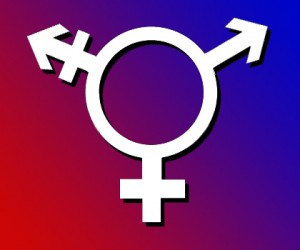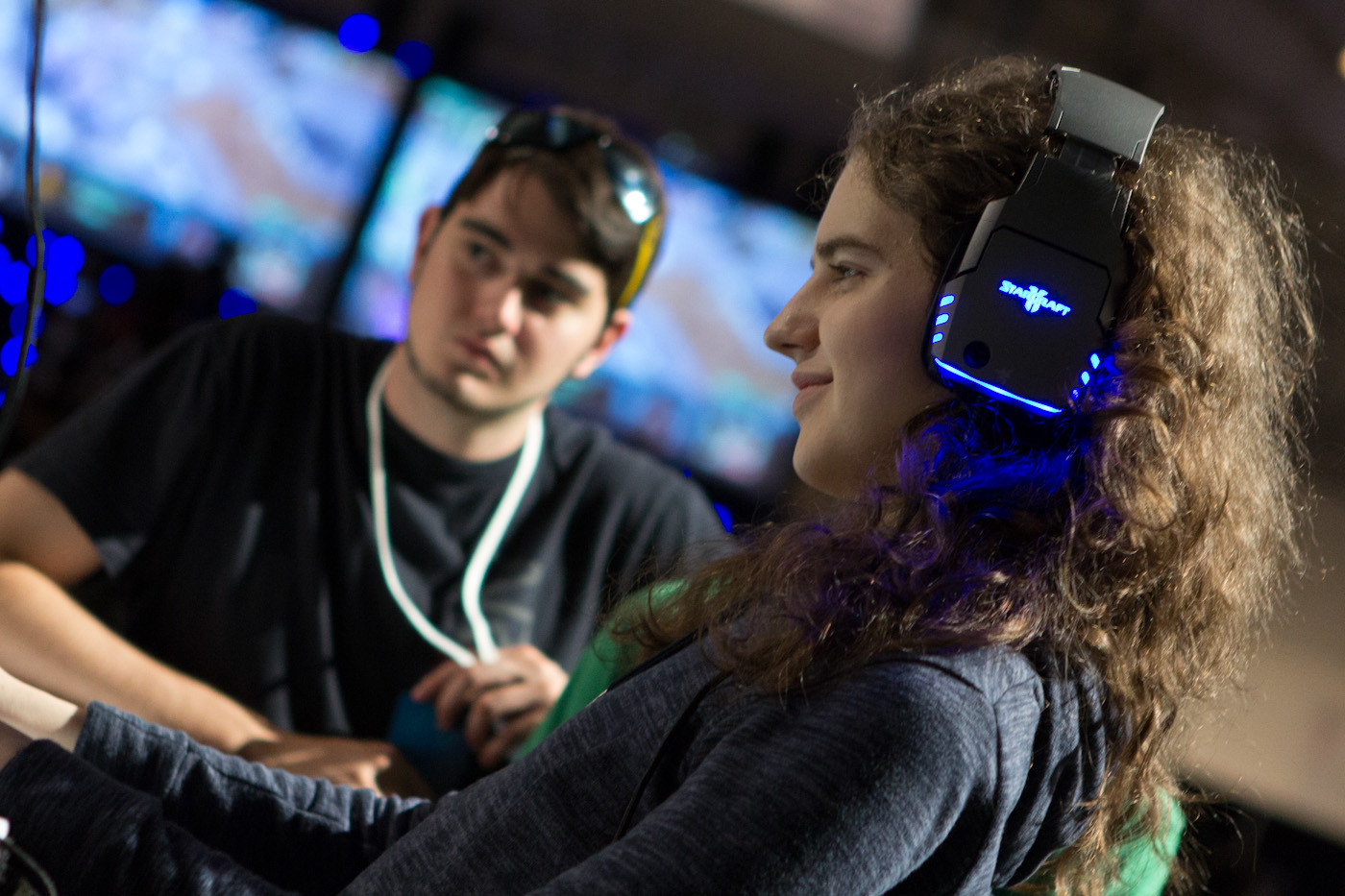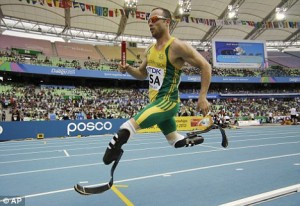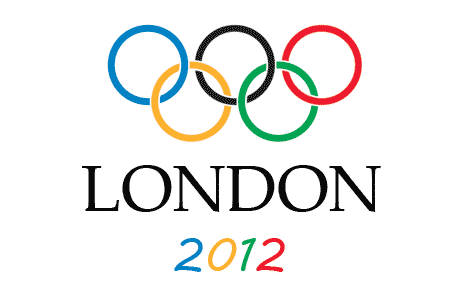This article contains my personal opinions and musings.
 Today is the start of the London 2012 Summer Olympics. This year’s olympics has faced a number of controversies – one of which is somewhat pertinent to biology, the issue of gender and sex. The olympics, like many sporting institutions, has long separated competitors into two main categories – male and female. This would be simple, if sex determination was so discrete. But sex is not discrete, it is a spectrum which at best can be described as two common clusters of phenotypes around what we call ‘male’ and ‘female’. Even chromosomal sex is not as simple as XX vs XY – there are common cases of XXY and XYY and other varieties. Genitals don’t always follow the chromosomal pattern either, and hormone diversity (which drives development) creates an effective continuum between male and female. Individuals significantly between both sexes are often referred to as “intersex” but even then the line between intersex and being one sex or another is a blurred one.
Today is the start of the London 2012 Summer Olympics. This year’s olympics has faced a number of controversies – one of which is somewhat pertinent to biology, the issue of gender and sex. The olympics, like many sporting institutions, has long separated competitors into two main categories – male and female. This would be simple, if sex determination was so discrete. But sex is not discrete, it is a spectrum which at best can be described as two common clusters of phenotypes around what we call ‘male’ and ‘female’. Even chromosomal sex is not as simple as XX vs XY – there are common cases of XXY and XYY and other varieties. Genitals don’t always follow the chromosomal pattern either, and hormone diversity (which drives development) creates an effective continuum between male and female. Individuals significantly between both sexes are often referred to as “intersex” but even then the line between intersex and being one sex or another is a blurred one.
This raises huge problems for sporting institutions who wish to hold onto the divide between male and female competitors. Where should the draw the line between their categories? This is a problem which is only set to get worse as the world’s population increases the number of “less common” sexes rises. So far responses have been less than ideal and olympic committees have come under increasing criticism for their allegedly unscientific approaches.
 I think the problem is a pretty difficult one, as biologically it would really make the most sense to scrap the categories in the first place. This is not a great response though, as we would quickly find female athletes largely removed from competition – being (on average) unable to compete with men in a large number of sports. This isn’t the sort of response befitting the modern pro-feminism society we should idealise. What then can be done? I don’t have an answer. The answer the olympic committee has given is to draw a line in the sand – but like any line, it will be hotly debated.
I think the problem is a pretty difficult one, as biologically it would really make the most sense to scrap the categories in the first place. This is not a great response though, as we would quickly find female athletes largely removed from competition – being (on average) unable to compete with men in a large number of sports. This isn’t the sort of response befitting the modern pro-feminism society we should idealise. What then can be done? I don’t have an answer. The answer the olympic committee has given is to draw a line in the sand – but like any line, it will be hotly debated.
A System of Gender-Identity Division?
The other issue I have yet to touch on is gender. The modern usage of the word gender refers to a personal identity and is not directly linked with sex or sexuality. To the chagrin of gender studies students everywhere, sex and gender are often conflated by those who talk about them. So should sports take any heed of gender? Currently they only seem to care about sex – because sex is what supposedly leads to differential sporting ability (primarily through hormones).
 But perhaps what really what we want to do is simply separate genders.This loses the (increasingly weakening) pre-tense of a fair ground of competition and replaces it with the simple notion that we should have two separate competitions based on personal gender identity. On the plus side this approach easily does away with the notion of fundamentally flawed biological testing. However many would argue that the “fair ground” is the only reason for splitting male and female in sport to begin with – and a gender-identity system is merely arbitrary. The other worry is that this will lead to M2F transgendered people outcompeting the majority of biologically female competitors – or worse, that males will “fake” their gender identity to compete in a slightly “easier” competition.
But perhaps what really what we want to do is simply separate genders.This loses the (increasingly weakening) pre-tense of a fair ground of competition and replaces it with the simple notion that we should have two separate competitions based on personal gender identity. On the plus side this approach easily does away with the notion of fundamentally flawed biological testing. However many would argue that the “fair ground” is the only reason for splitting male and female in sport to begin with – and a gender-identity system is merely arbitrary. The other worry is that this will lead to M2F transgendered people outcompeting the majority of biologically female competitors – or worse, that males will “fake” their gender identity to compete in a slightly “easier” competition.
Of course there are examples of sports which currently have a male/female split without there being any noticeable performance difference between competitors. Some examples of events which are relatively close off the top of my head include shooting, curling, and synchronised swimming. There are also sports which are already kept as mixed sex, including sailing, skating, badminton, luge, and equestrian. In these cases the argument for “fair ground” isn’t relevant.
E-Sports as a Model for Gender-Identity Division
I am a huge fan of e-sports (electronic sports, otherwise known as competitive computer games). E-Sports are steadily rising in popularity (if you don’t believe it I recommend checking out the crowd of this event). The reason I bring them up is for two reasons:
- Computer games have a relatively even playing field between males and females.
- Despite this, competitive computer games (Starcraft, LoL, Halo, CoD) have a huge male bias in terms of player base.
Given the first point, most e-sports don’t have separate divisions for males and females. However given the relatively low female turnouts in these sports and to promote gender equality a large number of female-only events exist. Sex testing for such competitions has never been considered given their smaller number of competitors. However a recent e-sports star in the game Starcraft 2, has caused some events to consider these decisions.

Team Acer’s Scarlett is a rising star with a number of very impressive achievements under her belt. She recently took home the Canadian WCS finals – defeating a number of well known players. She is also the first successful transgendered SC2 player. In addition to her regular event attendance, she has also attended a large number of female only events – which have been happy to have her. From this we can deduce that, for now, esports is actually a working example of a gender-identity based model. This makes sense – in terms of equality, identity is what really matters, and the “level playing field” is much less of an issue in computer games.
So we can see that using a gender-identity model does have uses, primarily in sports with unequal gender participation which don’t fundamentally favour one gender over the other.
Transhumanism: The Growing Challenge
Gender-identity divisions might be good model for some sports, but the majority are still left in the problematic situation of needing to divide genders and wanting a physical metric to do so. This problem is only going to get worse though – as the elusive “fair ground” is quickly disappearing. This Olympics is special – it is the first Olympics in which a double-amputee athlete will be competing. Oscar Pistorius had his legs amputated a a baby but with the help of state of the art “Cheeta Flex-Feet” has now qualified to represent South Africa in the 400 meter dash and as part of the 4×400 meter relay.

His success has raised controversy not unlike that seen around women with “unnatural” amounts of testosterone. People are worrying that he has an unfair advantage. What level of prosthetics is acceptable, and at what point does a human competitor cease to be human enough to compete? This will undoubtedly become a huge issue for sporting institutes to deal with as these technologies are only just starting to be seen.
In the future we may also see “biological” prosthetics – ranging from surgically added parts to human genetic modification (or even just extensive genetic screening). If such biological prosthetics involve hormonal treatment – then the line between sexes will become even more blurred and difficult to deal with. If the higher amount of testosterone males have is equivalent to a prosthetic – the arbitrariness of our current divide will become all the more evident.
At the moment the olympics is striving to maintain the fair ground standards which have served them in the past, but they will need to make a tough decision in the future. On the one hand they could stick to their model and come up with harsher and stricter ways to define who is allowed to compete, but they will be fundamentally arbitrary and in many ways ignorant of the fact that a large amount of sporting prowess comes from abnormalities in the first place. On the other hand they could ditch the idea of a fair playing field in the first place and embrace the idea that sports have never really been fair in the first place. For now, we can continue to argue over the line in the sand.















One of the problems associated with the sex divide in sport is the degree of emphasis placed on it. Yes, sex characteristics can influence results (though not in such straightforward ways as many people think) yet so do factors like height or the possession of certain genes that increase the amount of oxygen the blood can carry, and we don’t segregate athletes on that basis.
As for gender identity and sport, it’s worth noting that somebody who has transitioned from male to female and been on hormone treatment for two years is unlikely to have any significant advantage over other women (of the same height). Trans women don’t usually retain male levels of muscle mass.
Thanks for the insights Jennie, you make some good points. Upon further reflection after writing the article I think the idea of using gender identity as a divider really comes down to what we see the purpose of the division being. This is a surprisingly hard thing to pin down, in my mind at least.
By July 1, 2012 – 1:10 pmYoure so cool! I dont suppose Ive read something like this before. So nice to search out any person with some unique ideas on this subject. realy thanks for starting this up. this web site is something tha#1t82&7;s wanted on the internet, someone with somewhat originality. helpful job for bringing something new to the internet!